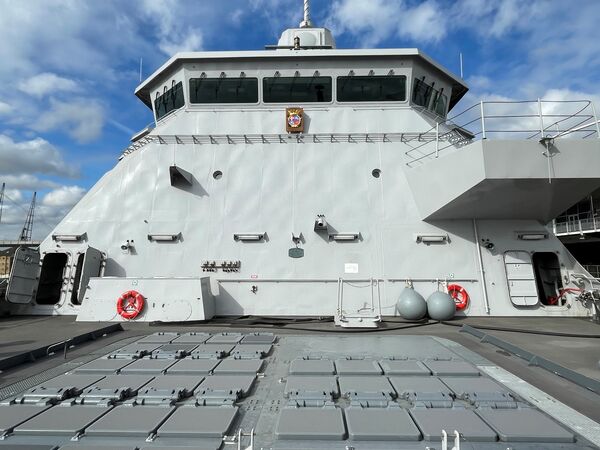
The strike-length MK 41 vertical launcher on De Ruyter is already capable of accommodating the Tomahawk cruise missile. (Richard Scott/NAVYPIX)
The Royal Netherlands Navy (RNLN) is moving forward with plans for a proof-of-concept launch of a Tomahawk cruise missile in the Pacific during the second half of 2024.
Work is under way to prepare the De Zeven Provinciën-class air-defence and command frigate (Luchtverdedigings en commandofregat: LCF), HNLMS De Ruyter, to execute a firing trial around September/October 2024 on the Point Mugu Sea Range. The test is intended to gather evidence and inform requirements for a full Tomahawk retrofit to all four of the RNLN's LCF frigates.
The Netherlands government on 3 April 2023 announced its intention to acquire the Raytheon Tomahawk land-attack cruise missile from the US government to meet a requirement for a long-range maritime strike capability. At that time, State Secretary for Defence Christophe van der Maat said that the Netherlands Ministry of Defence (MoD) was pursuing a series of Foreign Military Sales (FMS) cases with the US government, and revealed plans for a test launch from an LCF in 2024 or early 2025.
Commander Welmer Veenstra, commanding officer of De Ruyter, told a 13 September media briefing at DSEI 2023 in London that his ship was slated to execute the Tomahawk proof-of-concept firing in 2024. “We will perform a technical launch in [autumn] 2024 depending on getting everything in place,” he said onboard De Ruyter alongside the DSEI site. He said, “There is a huge amount of work going on to get the FMS arrangements in place.”
Looking to read the full article?
Gain unlimited access to Janes news and more...
